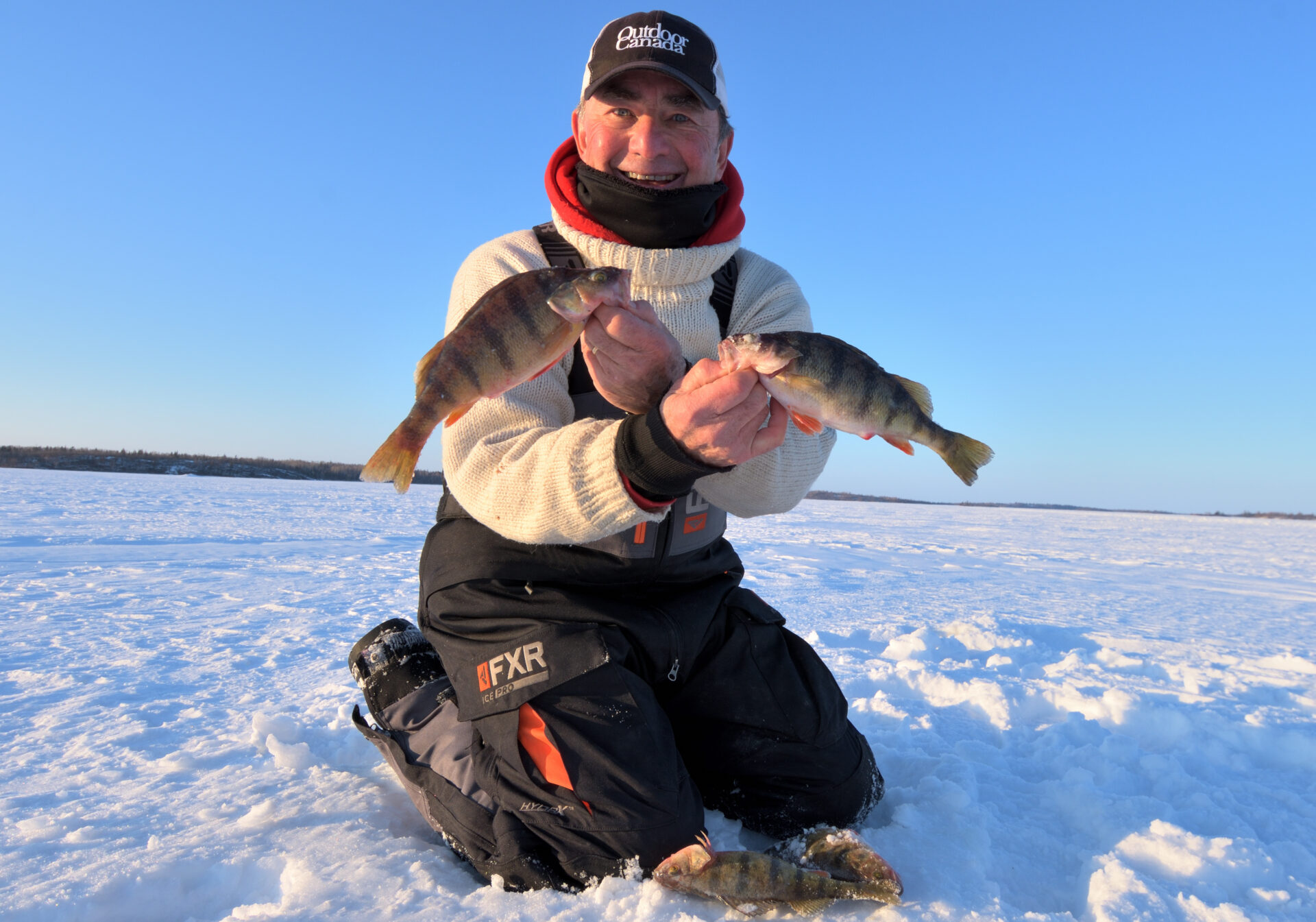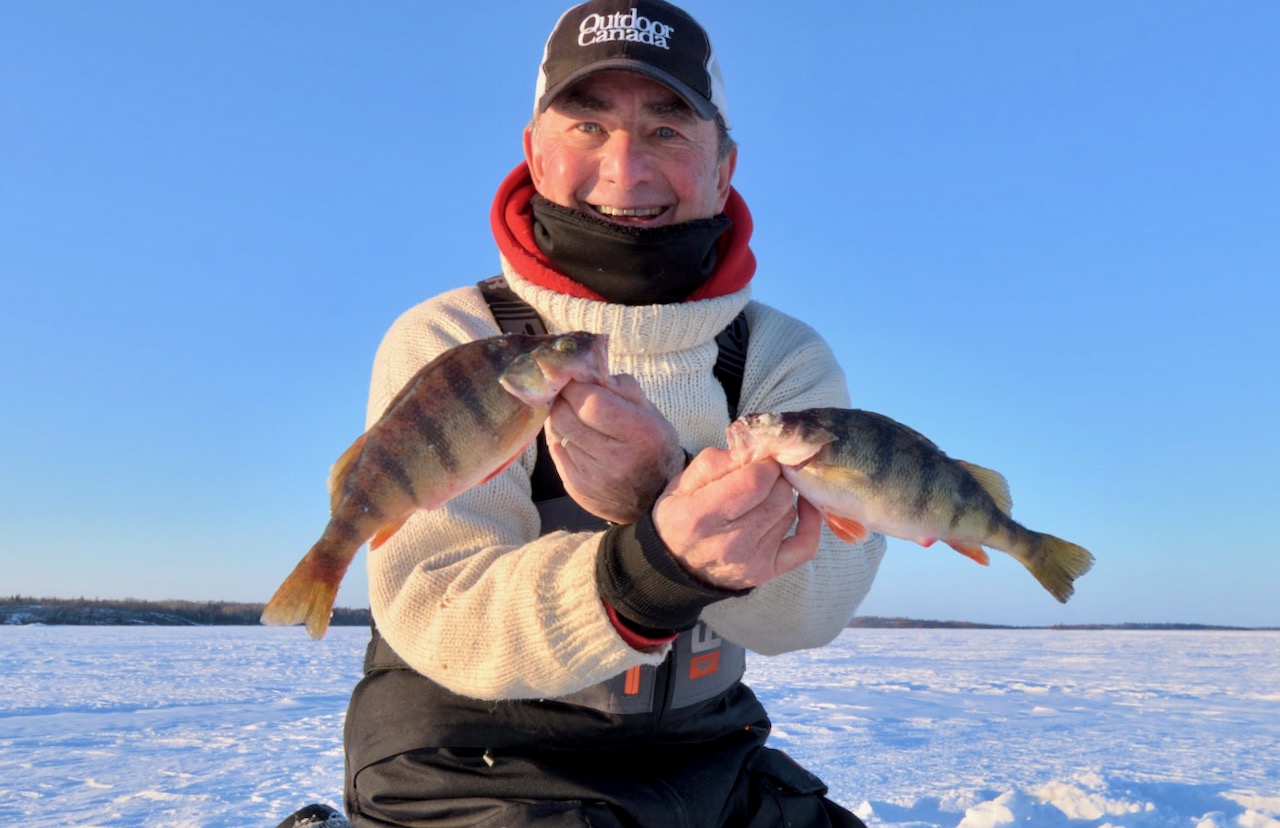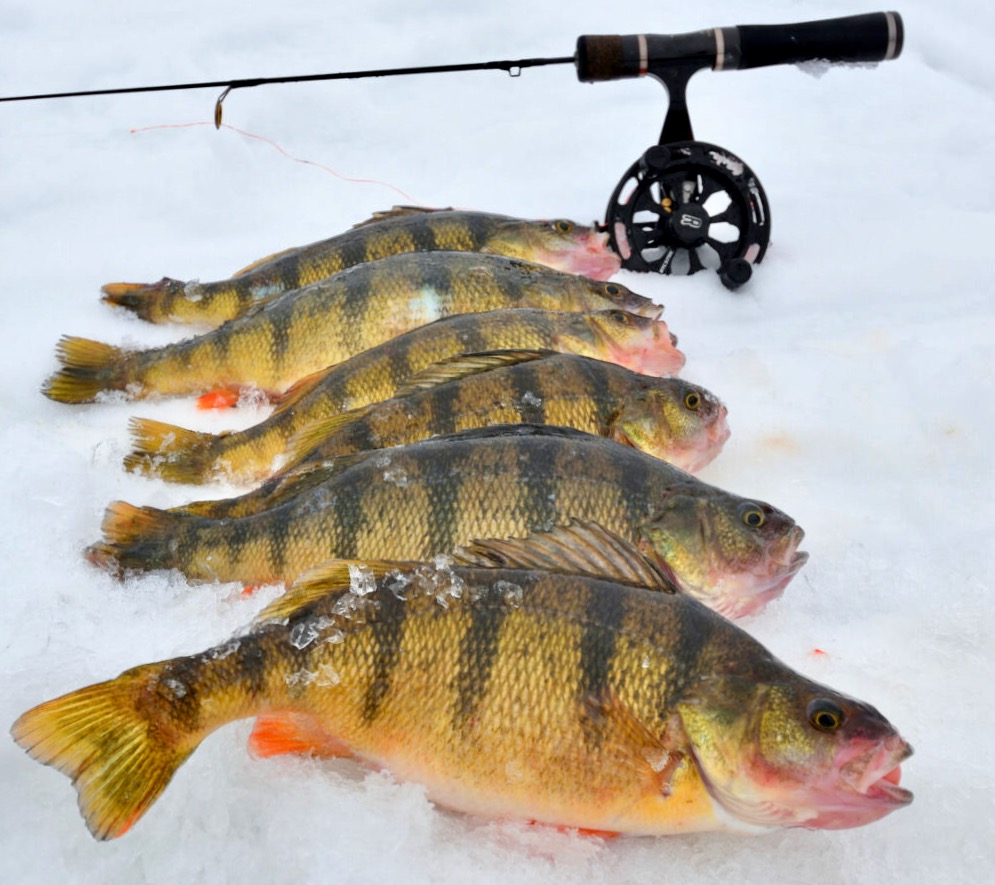BESTING THOSE BOTTOM-HUGGING PERCH
When the bite is tentative, you need to go light with your gear—sort of
Advertisement
This is the wildest start to an ice-fishing season that I have ever experienced, with massively warmer temperatures than usual, and thinner, poorer ice conditions. I scoped out a favourite lake-trout lake the other day, in anticipation of the season opener on New Year’s Day and it was still 90 per cent free of ice. So it’s likely we’ll camp out on a much smaller, shallower body of water and greet the new year catching jumbo perch.
Advertisement
I am fine with that, too, because there is not much more I look forward to—at least in the food department—than a plate of hot, golden, crispy perch fillets smothered in plum sauce. I can taste them just thinking about it.
At the same time, however, the thin ice and lack of snow means that light will be streaming down to the bottom and any on-ice noise will be magnified, alerting the perch. Fortunately, I’ve got some fine-tuned tactics up my sleeve for the tentative yellow, orange and black striped bandits.
I especially like these tactics if I see perch them on the sonar screen hanging tight to the bottom. That’s a giveaway that the fish are scarfing up bloodworms (chironomid larva) from the bottom. In fact, if you put an underwater camera down a hole, chances are likely you’ll see the bottom covered with tiny volcano-like eruptions. These are the homes of the worms that poke their heads out of the little mountain top tubes to feed. And grazing perch—not to mention just about every other species of fish—absolutely devour them.
Advertisement
The best way to turn a tough perch bite into a gimme is by using a heavy, compact tungsten jig. Some anglers err by thinking downsizing always means lighter, but heavy compact jigs like True North Baits Micro Tungsten Jigs and Big Sky Flies Tungsten Series are ideal because they plummet to the bottom quickly, yet appear minuscule, so they’re an easy gulp-size meal for a perch to swallow.
Being compact and heavy—yet still petite—has another advantage. You can tighten up your line so you will feel a bite, but at the same time you’ll see your line straighten out…. or loosen. That’s super important when the fish are biting lightly because, while you might FEEL 30, 40 or 50 per cent of the hits, you’ll SEE every single one of them when your line tightens up, or goes slightly slack.
Advertisement
In the good old days we relied on maggots to tip our jigs for tough-bite perch, but there are so many good soft plastic alternatives now that I couldn’t tell you the last time I used a maggie. Plus plastics—like the Mister Twister TwisterMite and True North M’eh Fly require no TLC to keep them alive.
The other key that I can’t emphasize enough when finessing finicky perch is using light line. We consider four-pound-test to be heavy, three-pound perfect and two is often our go-to poundage. You can’t believe how fast it will get your tungsten jig to the bottom and in front of a perch.
In-line Black Betty-style reels are perfect for delivering your offerings, too, by employing either the free fall feature or pulling out line by hand against the drag. Just don’t make the mistake of doing it when the reel is in freespool mode or you’ll discover words you never knew you had in your vocabulary.
I should mention, too, that light-action ice rods with quick soft tips are ideal for teaming up with the tiny, compact, heavy jigs that work so well. Ditto, spring bobbers that you can affix to your rod permanently or on a temporary pop-on/pop-off basis.
Keep your jig between 12 to 18 inches off the bottom and jiggle it subtly until you spot a jumbo perch rushing in to your lure. Then, continue shaking it gently as you slowly lift up your rod tip and take it away from the fish. When the perch closes the distance, slam on the brakes and stop, hold the jig perfectly still, watch your line tighten up and set the hook. It really is that easy—and that much fun.
Now, where did I put the plum sauce…



